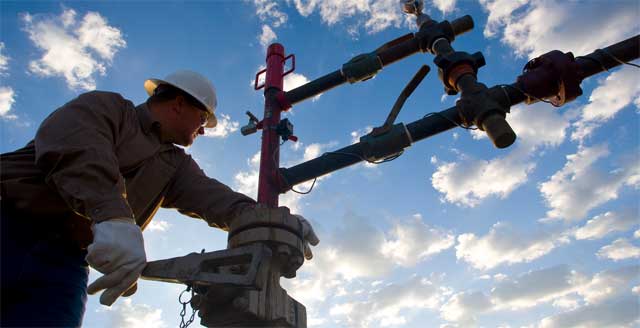
The high powered injection of water and chemicals into a drilled area to release gas is commonly called “fracking” and has been very controversial. But fracking may endanger not only the environment but also the workers who work at fracking sites. In fact, the US Occupational Safety and Health Administration (OSHA) and the National Institute for Occupational Safety and Health (NIOSH) recently released an alert on the hazard of silica exposure for workers at such sites. Here’s a look at why silica exposure is a health hazard, how fracking operations can expose workers to this hazard and what you should do to protect your workers.
Hazards & Risk of Silica Exposure
Crystalline silica is a common mineral found in the earth’s crust and a key component of the sand, clay and stone materials used to make every day products, such as concrete, brick and glass. Respirable crystalline silica is the part that’s small enough to enter the lungs if inhaled. And breathing in silica can cause silicosis, a lung disease in which lung tissue around trapped silica particles gets inflamed and scarred, reducing the lungs’ ability to take in oxygen. Exposure to silica can also cause lung cancer and has been linked to other diseases, including tuberculosis, chronic obstructive pulmonary disease and kidney and autoimmune disease.
Studies have found that workers may be exposed to dust with high levels of respirable silica during hydraulic fracturing. According to NIOSH, workers can be exposed to silica when dust is:
- Ejected from access ports on top of the sand movers during refilling operations while the machines are running, i.e., “hot loading”;
- Ejected and pulsed through open side fill ports on the sand movers during refilling;
- Generated by on-site vehicle traffic;
- Released from the transfer belt under the sand movers;
- Created as sand drops into, or is agitated in, the blender hopper and on transfer belts;
- Released from operations of transfer belts between the sand mover and the blender; and
- Released from the top of the end of the sand transfer belt on sand movers.
The OHS laws require employers to take all reasonable steps to protect workers from safety and health hazards, such as exposure to silica. And the OHS regulations in some jurisdictions, such as AB and ON, have specific requirements relating to silica, while others address airborne hazards in general, such as dust.
Thus, you should ensure that you comply with any applicable OHS regulations in your jurisdiction that apply to silica dust. To help you comply, some jurisdictions publish guides on silica. For example, the Ontario Ministry of Labour published a guide on silica in construction projects and Occupational Health Clinics for Ontario Workers Inc. released this guide for protecting workers from silica. When complying with the silica requirements in your jurisdiction, keep in mind these 12 suggestions from the NIOSH hazard alert:
- Monitor the air to determine worker exposures to silica;
- Require the capping of unused fill ports on sand movers;
- Reduce the drop height between the sand transfer belt and T-belts and blender hoppers;
- Limit the number of workers and the time they must spend in areas where dust and silica levels may be elevated;
- Consider ways to perform dusty operations remotely to completely remove workers from these areas;
- Apply fresh water to roads and around the well site to reduce the dust;
- Enclose points where dust is released;
- Where possible, use enclosed cabs or booths;
- Use local exhaust ventilation to collect silica-containing dusts and prevent dust from escaping;
- Replace transfer belts with screw augers on sand movers;
- Provide respiratory protection when it’s needed to protect workers; and
- Consider medical monitoring for workers who are exposed to silica to ensure that if they do develop a silica-related illness, it’s caught early.
Insider Says: Adapt this Model Crystalline Silica Exposure Plan to protect your workers. And go to Safety Smart for a safety talk handout for workers on silica and an article on silicosis. Not a subscriber to SafetySmart’ Sign up for a free trial.
INSIDER SOURCE
“Hazard Alert: Worker Exposure to Silica During Hydraulic Fracturing,” OSHA and NIOSH, June 2012.


Leave A Comment